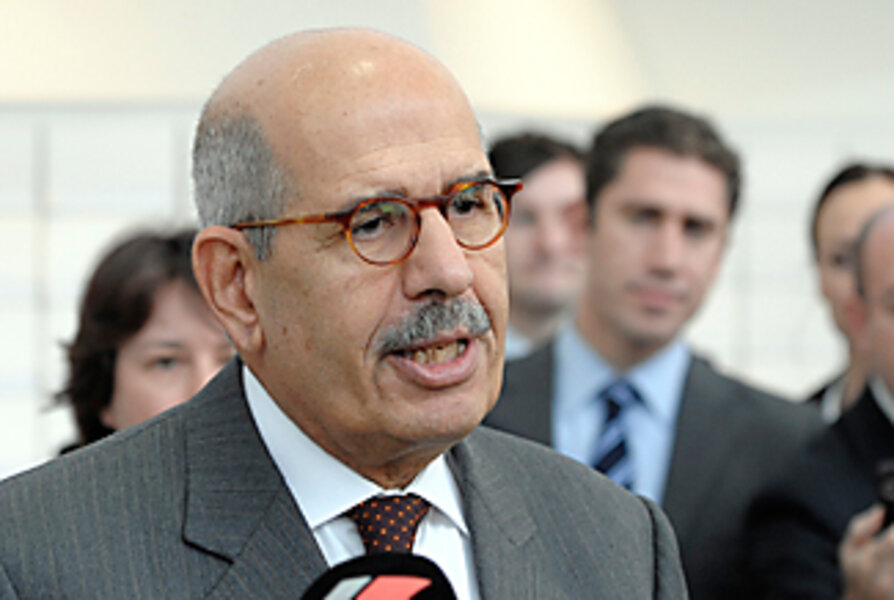Why does Iran need more potent uranium? Medical care.
Loading...
| Washington
Iran and the West appear close to a deal in which Tehran would ship much of its nuclear material to Russia for further enrichment.
Eventually Iran would get this uranium back, after it had been increased in potency and refurbished into fuel rods. What then? Why does Iran need a stockpile of more highly-enriched uranium, anyway?
Iran says it needs the fuel to power a small research reactor, originally supplied by the US, that produces medical isotopes. Western experts agree that this crucial reactor probably is nearing the time at which it needs more uranium.
The Tehran Research Reactor (TRR), as the facility is called, is a 5-megawatt, light-water type reactor located in the Tehran suburbs. The US provided it to the Shah of Iran under the "Atoms for Peace" program. It began operation in 1967 and was the foundation of Iran's nascent nuclear program.
As supplied by the US the TRR actually ran on weapons-grade uranium of over 90 percent enrichment. After the initial fuel load was used up, Iran contracted with Argentina to refurbish the core to burn lower-enriched fuel and to provide that fuel.
In 1992 Argentina sold Iran the reactor's current fuel supply, which is enriched to 19.75 percent. Iran began to use this fuel the following year.
"No other country has since been willing to supply additional fuel," notes former weapons inspector David Albright, president of the Institute for Science and International Security, in a technical analysis of the TRR's fuel requirements.
If run constantly at full power, the TRR could have burned up the Argentinean fuel in a decade. At most, the fuel will last 20 years, Albright calculates. That means it is high time for Iran's nuclear officials to plan for what happens next.
The medical isotopes produced by the reactor are used in diagnosis and treatment of some illnesses. Right now, Iran spends about $1 million a year to import isotopes. If it could run the TRR at full power, it might be able to produce enough to handle domestic demand, while jump-starting a nuclear medicine industry.
Iran does have its own nuclear enrichment facilities, of course. These are of great concern to the West, which worries they could be used to produce uranium enriched enough to use in nuclear weapons.
But at the moment, Iran only enriches uranium to a level of about 3 percent. Exporting a large portion of its declared stockpile of this material could ensure against a so-called "breakout scenario", in which Iran would race to produce bomb material as fast as possible in defiance of much of the rest of the world.
If Iran ships about 1,200 kilograms (2,650 pounds) of its low-enriched uranium abroad, Russia could turn it into about 120 kilograms (265 pounds) of 19.75 percent enriched uranium for the TRR, under David Albright's calculations.
At full power, that would last Iran roughly six to 13 years. If Tehran continues to run the TRR at less than full power, "then this would be sufficient fuel for 11 to 21 years of operation," according to Albright.





